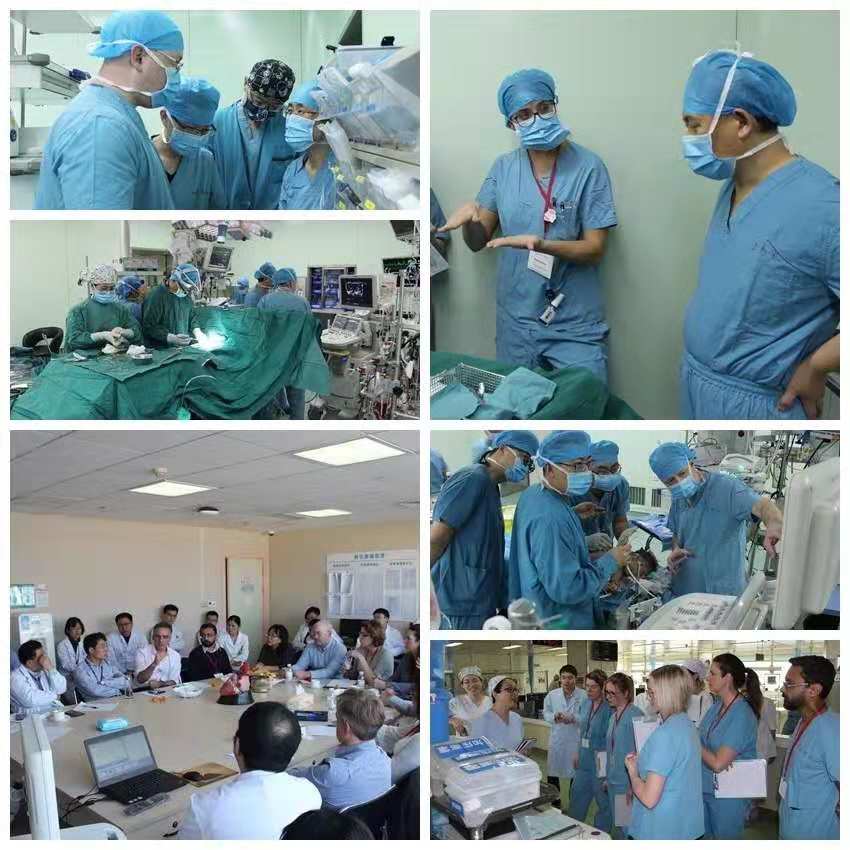
The number of active patient assistance programs in China almost doubled from 72 in 2016 to 135 in 2020, with a cumulative value of around RMB96.6 billion. Continuous support from national policies, enhanced patient reach, and the publicity and promotion of medical philanthropists, are the major drivers of the industry’s rapid development.
Full Answer
How does China provide health insurance?
Why did China merge medical insurance?
How many hospitals are in the Zhenjiang model?
How long do you have to work in China to become a medical student?
What is the state market regulatory agency in China?
What is the role of the central government in China?
Does China have health insurance?
See 4 more
About this website

Overview of China’s Healthcare System - Economics 274 Fall 2018
It is interesting to read about the Chinese healthcare system and simultaneously compare it to that of the US. One story line in the class so far is that in many developmental areas, China is where the US was many many years ago.
China’s health care reforms - McKinsey & Company
China’s health care reforms 59 To make the CHCs more attractive, some governments, especially those in China’s lar-gest, wealthiest cities, are spending heavily to
How does China provide health insurance?
China achieves near-universal coverage through the provision of publicly funded basic medical insurance. The urban employed are required to enroll in an employment-based program, which is funded primarily via employer and employee payroll taxes. Other residents can voluntarily enroll in Urban-Rural Resident Basic Medical Insurance, financed primarily by central and local governments through individual premium subsidies. Local health commissions organize public and private health care organizations to deliver services. The basic medical insurance plans cover primary, specialty, hospital, and mental health care, as well as prescription drugs and traditional Chinese medicine. Deductibles, copayments, and reimbursement ceilings apply. There is no annual cap on out-of-pocket spending. Complementary private health insurance helps cover cost-sharing and coverage gaps.
Why did China merge medical insurance?
In 2016, China’s central government, the State Council, announced that it would merge the Newly Cooperative Medical Scheme and Urban Resident Basic Medical Insurance to expand the risk pool and reduce administrative costs. 2 This consolidation is still underway.
How many hospitals are in the Zhenjiang model?
There are three main medical alliance models. 19 Hospitals in the Zhenjiang model have only one owner (usually the local bureau of health). Those in the Wuhan model do not belong to the same owner, but administration and finances are all handled by one tertiary hospital. Hospitals in the Shanghai model share management and technical skills only; ownership and financial responsibility are separate. The Shanghai model is dominant in China.
How long do you have to work in China to become a medical student?
Medical students who attend these education programs must work in rural or remote areas for at least six years after graduation.
What is the state market regulatory agency in China?
The newly created State Market Regulatory Administration includes the China Drug Administration, which is responsible for drug approvals and license s. The China Center for Disease Control and Prevention, although not a government agency, is administrated by the National Health Commission.
What is the role of the central government in China?
Role of government: China’s central government has overall responsibility for national health legislation, policy, and administration. It is guided by the principle that every citizen is entitled to receive basic health care services. Local governments — provinces, prefectures, cities, counties, and towns — are responsible for organizing and providing these services.
Does China have health insurance?
Because China has a huge population, insurance coverage was increased gradually. In 2011, approximately 95 percent of the Chinese population was covered under one of the three medical insurances. Insurance coverage is not required in China.
What is drug assistance?
Drug assistance programs—another term for patient assistance programs—can also be offered by state programs or independent third-party nonprofits/charitable organizations. Whether a patient qualifies for these programs will depend on their insurance and the prescribed therapy. Patients typically qualify for these programs if they do not have ...
Who sponsors drug assistance programs?
Drug assistance programs are usually sponsored by life sciences organizations (manufacturer- sponsored), non-profit or charitable foundation-sponsored, or a combination of the two. Usually, they also fall into these categories:
Can patients receive medication for little or no cost?
Patients who qualify for patient assistance programs can receive medication for little or no cost, helping the most in-need patients gain access to therapy if they cannot afford the typical drug pricing.
Why is China requiring oncology drugs?
According to China’s Center for Drug Evaluation (CDE), China has an exigent need for these drugs to combat rare diseases or life-threatening conditions such as cancer – 25% of the medicines on the list were for oncology – because no effective treatments existed already on the market.
What is the CDI scheme in Shenzhen?
At the end of November, Shenzhen’s Municipal Human Resources and Social Security Bureau released a shortlist of 10 drug therapies that could potentially gain local reimbursement under the city’s Critical Disease Insurance (CDI) scheme.
Is Perjeta approved in China?
Roche’s Perjeta (pertuzumab) for breast cancer. While the aforementioned drugs were recently approved, immunotherapy treatments Opdivo, Keytruda, and Lynparza have already launched in China, at severely discounted rates when compared to prices elsewhere, particularly in the US. Opdivo was China’s first immunotherapy.
Does China have universal health insurance?
Universal health insurance coverage for 1.3 billion people means China must increase uptake of “clinically urgently needed new drugs” already approved in the US, EU, and Japan. Mostly oncology products are being imported, along with HIV/AIDS medicines. Pharma is agreeing to steep discounts to be reimbursed on China’s national drug lists.
Is Lynparza free if you live below poverty?
But patients who are receiving social security or live below the poverty line may apply to receive Lynparza free of charge. China expands reimbursement lists.
What is Help at Hand?
Help At Hand provides assistance to eligible patients who have no insurance or who do not have enough insurance and need help getting their Takeda medicines. *
What is Onepath for healthcare?
With OnePath®, patients and caregivers have personalized product support, provided by a dedicated team of specialists. Some OnePath team members are available to meet in person with patients, caregivers, and healthcare providers, depending on the specific need, medication, or treatment access challenge.
How does Onepath help?
OnePath can help by: Assisting with insurance access and coverage issues, conducting benefit investigations, and providing information about financial assistance options, such as the OnePath Co-Pay Assistance Program. Working with specialty pharmacies to set up treatment shipment and delivery.
How does China provide health insurance?
China achieves near-universal coverage through the provision of publicly funded basic medical insurance. The urban employed are required to enroll in an employment-based program, which is funded primarily via employer and employee payroll taxes. Other residents can voluntarily enroll in Urban-Rural Resident Basic Medical Insurance, financed primarily by central and local governments through individual premium subsidies. Local health commissions organize public and private health care organizations to deliver services. The basic medical insurance plans cover primary, specialty, hospital, and mental health care, as well as prescription drugs and traditional Chinese medicine. Deductibles, copayments, and reimbursement ceilings apply. There is no annual cap on out-of-pocket spending. Complementary private health insurance helps cover cost-sharing and coverage gaps.
Why did China merge medical insurance?
In 2016, China’s central government, the State Council, announced that it would merge the Newly Cooperative Medical Scheme and Urban Resident Basic Medical Insurance to expand the risk pool and reduce administrative costs. 2 This consolidation is still underway.
How many hospitals are in the Zhenjiang model?
There are three main medical alliance models. 19 Hospitals in the Zhenjiang model have only one owner (usually the local bureau of health). Those in the Wuhan model do not belong to the same owner, but administration and finances are all handled by one tertiary hospital. Hospitals in the Shanghai model share management and technical skills only; ownership and financial responsibility are separate. The Shanghai model is dominant in China.
How long do you have to work in China to become a medical student?
Medical students who attend these education programs must work in rural or remote areas for at least six years after graduation.
What is the state market regulatory agency in China?
The newly created State Market Regulatory Administration includes the China Drug Administration, which is responsible for drug approvals and license s. The China Center for Disease Control and Prevention, although not a government agency, is administrated by the National Health Commission.
What is the role of the central government in China?
Role of government: China’s central government has overall responsibility for national health legislation, policy, and administration. It is guided by the principle that every citizen is entitled to receive basic health care services. Local governments — provinces, prefectures, cities, counties, and towns — are responsible for organizing and providing these services.
Does China have health insurance?
Because China has a huge population, insurance coverage was increased gradually. In 2011, approximately 95 percent of the Chinese population was covered under one of the three medical insurances. Insurance coverage is not required in China.

Status of The Patient Assistance Industry in China
- Accoding to the public information, the number of active patient assistance programs in China almost doubled from 72 in 2016 to 135 in 2020, with a cumulative value of around RMB96.6 billion. Currently, drug assistance programs are mainstream. Drug assistance programs remain the mainstream of PAPs. Among the programs still in operation in 2020, the...
Drivers and Obstacles in Industry Development
- Continuous support of national policies, enhanced reach to the patients, and the publicity and promotion of warm-hearted personages, are the major forces driving rapid development of the industry. However, PAPs are facing certain obstacles, mainly around the patients' misunderstanding about the drug assistance programs and the absence of a unified program m…
Future Trends and Directions in Development
- National policies make it clear that the proportion of medical charitable donations, an important part of the medical insurance system, will continue to rise in the future. There is a great scope for improvement as compared to the amount of donation of the PAPs in 2020, i.e. RMB12.3 billion. 1. Comprehensive patient assistance platform emerges, and the formulation of industrial standard…